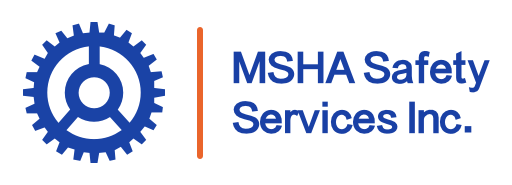Mining is one of the most regulated industries, primarily due to the significant risks involved in the work environment. To maintain safety standards and regulatory compliance, the Mine Safety and Health Administration (MSHA) conducts audits to ensure that mine operators adhere to established safety practices. Navigating the MSHA audit process can be challenging, but with proper preparation, it can be a valuable tool for promoting safety and improving operational efficiency. This article will guide you through the purpose, components, and procedures of MSHA audits and offer insights on how to best prepare for one.
What Is the Purpose of an MSHA Audit?
The purpose of an MSHA audit is to assess compliance with federal safety regulations and identify any safety or health hazards present in mining operations. These audits focus on ensuring that mine operators adhere to legal requirements designed to protect workers from accidents, injuries, and potential hazards. By reviewing procedures, inspecting equipment, and interviewing personnel, MSHA audits play a critical role in preventing workplace incidents and maintaining a safe environment.
What Are the Key Components of an MSHA Audit?
An MSHA audit involves several critical steps designed to thoroughly assess a mine’s safety and operational practices. Understanding each component can help operators effectively prepare and ensure compliance.
Pre-Audit Preparation: Notification and Documentation
Before an audit, mine operators may receive a notification from MSHA. This stage involves gathering all relevant documentation, including previous inspection reports, safety policies, and employee training records. MSHA is not required to provide notification prior to inspections however, so it is essential to maintain paperwork and ensure the mine site is compliant with all MSHA regulations at all times.
Audit Planning: Defining Scope and Forming the Team
The MSHA team establishes the audit’s scope and objectives and assembles a team with the necessary expertise to conduct a comprehensive evaluation of the site.
Field Inspection: Site Visits and Interviews
During the site visit, MSHA inspectors conduct physical inspections, verify the condition of equipment, and evaluate overall working conditions. Employee interviews provide further insights into safety practices and help inspectors assess the understanding and implementation of safety protocols.
Data Collection: Observations and Record Review
Data collection involves observing site practices and reviewing safety and operational records, including accident reports and maintenance logs. This thorough review identifies any patterns or recurring safety concerns. Current safety training certificates are also required for all personnel working on the mine site, including contractors.
Findings and Recommendations: Identifying Non-Compliance and Best Practices
Based on observations, MSHA auditors outline non-compliance issues and suggest best practices to address them. These findings guide operators on corrective actions to improve safety standards. Large penalties can be associated with a variety of violations, so it is best to remain compliant at all times in order to mitigate the risk of being fined, or worse.
Follow-Up: Corrective Actions and Follow-Up Audits
After the initial audit, operators are required to implement corrective actions for identified issues. MSHA may conduct follow-up audits to verify compliance and ensure that necessary changes have been made.
Continuous Improvement
The MSHA audit process promotes a culture of continuous improvement by encouraging mine operators to regularly update safety protocols and evaluate compliance, ultimately leading to a safer work environment.
How Often Are MSHA Audits Conducted?
The frequency of MSHA audits depends on factors such as a mine’s size, type, and safety history. Generally, surface mines are inspected at least twice a year, while underground mines are inspected quarterly. Additionally, audits may be triggered by serious accidents or public complaints, requiring more frequent reviews in some cases.
What Are the Common Findings During an MSHA Audit?
Common findings during an MSHA audit include improper equipment maintenance, insufficient safety training, lack of protective gear, and incomplete documentation. Identifying these issues can prevent serious incidents and improve overall workplace safety.
How Can a Mine Operator Prepare for an MSHA Audit?
Preparation is key to ensuring a smooth audit. Mine operators can prepare by:
- Conducting internal safety audits to identify potential issues.
- Ensuring documentation is complete and accessible.
- Providing refresher training for employees on safety protocols.
- Reviewing MSHA regulations to remain up-to-date with compliance requirements.
What Happens If a Violation Is Found During an MSHA Audit?
If MSHA identifies a violation, the agency issues a citation, and the mine operator must address the issue within a specified timeframe. Failing to correct violations may result in fines, increased inspections, or, in severe cases, temporary closure of the mine.
Can Mine Operators Appeal MSHA Citations?
Yes, mine operators can appeal MSHA citations if they believe they were issued unfairly. The appeal process involves submitting a request for review, and a formal hearing may be conducted to assess the citation’s validity.
What Is the Role of Employees During an MSHA Audit?
Employees play an essential role in an MSHA audit, as their knowledge and adherence to safety protocols are assessed through interviews. Workers should understand their rights and responsibilities, be honest in their responses, and adhere to established safety practices.

How Can Mine Operators Improve Their Compliance Before an Audit?
To improve compliance before an audit, operators should:
- Implement regular safety training programs.
- Conduct routine equipment checks and maintenance.
- Update safety protocols to reflect new MSHA guidelines.
- Encourage open communication about safety concerns among employees.
What Resources Are Available to Assist with MSHA Compliance?
Several resources can help mine operators with MSHA compliance, including:
- MSHA’s website, which offers guidelines, training programs, and compliance resources.
- Professional consultants who specialize in MSHA compliance, like MSHA Safety Services.
- Industry associations that provide educational materials and support for mine operators.
Navigating the MSHA Audit Process for Enhanced Safety and Compliance
The MSHA audit process is a cornerstone of mining safety, providing an opportunity for continuous improvement in workplace practices. By understanding the audit components, preparing adequately, and addressing areas for improvement, mine operators can foster a culture of safety and ensure compliance. Ultimately, these efforts benefit both workers and the broader community by promoting a safe, compliant, and efficient mining environment.

